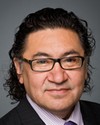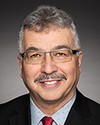Thank you for this invitation.
I've read testimony from various other witnesses who appeared before you during the summer. I will try not to parrot what has already been said. I will respond to the objectives of your study drawing from my own studies and experiences, many of which will be grassroots.
Quickly, I'll just outline who I am, which speaks to the objectives of this. I'm a retired person, but have lived in Nunavut for over 29 years, starting off in Pangnirtung, Gjoa Haven, Cambridge Bay, and now Iqaluit. I did do a year's study to finish my master's degree in psychology and counselling, but during my years in Nunavut, when I was working at a paid job, I worked in education and finished my years as a guidance counsellor at Inuksuk High School. I was also a trainer for school community counsellors. I also did much volunteer work and have been very involved in the area of suicide prevention within both Nunavut and nationally. I'm the past president of the Canadian Association for Suicide Prevention, a founder as well as the past president and now current vice-president of the Embrace Life Council, and a founder, trainer, and past president and current executive director of Nunavut Kamatsiaqtut Help Line. I have worked with many suicide research projects, publishing chapters in books and journals as well.
As we all know, suicide is multi-faceted, complex, and happens far too often among indigenous populations, especially here in Nunavut. It is, though, a public health issue that is highly preventable given the correct circumstances. As such, there is a need to focus in many areas: communities, families, and individuals. It is critical to recognize that, when a suicide happens, it affects so many people in the community and sometimes right across the Arctic. Everyone who lives in Nunavut for any length of time is potentially at risk. There is no one who has not been touched by suicide in some form. Many have had to deal with it on a continual basis in one way or another with themselves, a family member, a friend, a co-worker, or a community member. The list is endless.
Research tells us that exposure to suicide is a strong risk factor. There is no evidence that suicide actually runs in families, but there is evidence, certainly here in Nunavut, that it becomes a learned behaviour. When so many people around you die by suicide and/or make attempts at various times of their lives, others often emulate these actions.
There are some salient facts to consider. Again, northerners attempt and die by suicide at a far greater rate than southern Canadians. Added to that, and certainly connected, there is a far greater incidence of addiction, violence, and sexual, physical, and emotional abuse, which certainly the Embrace Life Council is trying to work with. There are few northern-based facilities or resources, though, to deal with these problems.
The past colonization, history, and legacy of the residential school system has affected all aspects of life, including parenting and coping skills. Recognizing personal and intergenerational trauma, social inequity, and the fact that many communities do not have appropriate access to mental health are important factors that really need addressing. The continuum of mental health care is also important. Isolated communities are the norm in Nunavut, not Iqaluit—we are not the norm—and people who do get mental health support in the south go back to their communities without the necessary supports in place in order to ensure that any changes can be made, supported, and continued.
Resiliency and healthy coping skills also need to be taught and supported. Everyone has ups and downs in life and stressful situations and times. Recognizing that and dealing with it are important factors that are not always practised in a healthy manner. It is important, though, to remember that in the past Inuit were resilient, and many are still today, but in the past they had to be in order to survive in a harsh environment. I've heard elders tell many stories of great endurance. Our youth today need to learn about these strengths, but be able to harness them to deal with the realities of their lives today.
The Nunavut Kamatsiaqtut Help Line is a community-driven service. During 1988-99, there were many suicides in the Baffin region of what was then the NWT, especially among young people. A conference was organized, with players from all the affected communities. The problems and possible solutions were explored. One idea that was put forward by a community member was the establishment of a first northern crisis line, or helpline, manned by trained volunteers. Because when I was much younger I worked at Ottawa's distress centre when doing my undergraduate studies at Carleton University, and because I was a participant at this conference, I was asked to help with this project.
In the spring of 1989, a group of CBC employees got together for a curlathon to raise funds for starting the helpline. This event provided the impetus for a group of like-minded citizens who got together at the same time to form the first working committee for the creation of the line. Over the summer, the trainers donated their time to develop a culturally relevant training program for the volunteers. With the generous assistance of many community organizations and a variety of individuals, the line started operation on January 15, 1990. During the first year of operation, the line received over 400 calls, and at that time we were only open to Iqaluit.
Having been in existence now for 27 years, and with a 1-800 number as well, the Nunavut Kamatsiaqtut helpline has continually operated 365 days a year as a volunteer organization. “Kamatsiaqtut” means “people who care”, and the name was chosen by one of our Inuk volunteers who has been with us the full 27 years. We utilize a large cadre of trained volunteers in Iqaluit who listen nightly, via both a local line and a 1-800 line to Nunavummiut accessing Kamatsiaqtut from all three Nunavut regions, as well as parts of Arctic Quebec and southern Canada. During these calls, people express their suicidal ideation, trauma, anger, grief, and pain resulting from unresolved issues and describe their isolation, fear, frustration, and lack of resources and information that serve as barriers to the successful resolution of their issues.
Kamatsiaqtut has recently put in place a 24-7 service, as recognized and desired by the Government of Nunavut. This additional service utilizes the assistance of Ottawa's distress centre, which answers calls when Kamatsiaqtut volunteers are not available.
As we recognize that Nunavut's suicide rate is higher than in any other Canadian jurisdiction, we are highly motivated as a volunteer organization composed of a wide variety of Inuit and non-Inuit Nunavummiut who demonstrate care and concern and translate it into concrete action.
There is a recognition that the helpline has saved lives and has made a significant and positive impact on many other lives. We have intervened many times, sometimes with sending out help and most other times with helping the caller come to the conclusion that they will stay alive for at least 24 hours, with the volunteer helping them plan out the next 24 hours with them and what they can do in case overpowering feelings take over again.
We have also heard from callers about the impact the service has had on their lives, and we've heard that perhaps they would not be here if the service did not exist. Our motto of “Helping Others Help Themselves” is relevant. Although volunteers are trained to deal with suicidal callers, we hope people call before they are in this state and get support for whatever their issues are.
The training is well received. Even the Nunavut Arctic College students, the third-year nursing students, are required to take it as part of their counselling course, and we offer it to them for free.
We do have many challenges, though. Our small amount of core funding is an issue. We are part of the Canadian Distress Line Network and are working on getting a Canada-wide 1-800 suicide line. We are the only organization that does not have a paid ED or any paid office staff.
Recognizing that there are many needs in Nunavut competing with us financially, we also need more core funding for many issues. One issue is to do a PR blitz. We don't have the funds to ensure the information about the line is known in all the communities and the number is on the tip of everyone's tongue. Posters and CDs with radio messages are all sent out, but we never know if they get distributed, or used, or put up around the community. The line also needs to be able to keep better statistics, as there is a constant expectation that we are a source for this type of information.
We would like to be able to purchase a program that is used all over the world in help lines, the iCarol program, but we again would need the money to do so and the funds to be able to receive training so we can train our volunteers on the system.
At this point, we cannot offer 24-7 service out of Nunavut—maybe in the future with enough resources. It is important, though, to keep the services office in Nunavut with Nunavummiut answering the calls for at least part of the 24-7 time.
For some callers, and for Nunavummiut in general, it is important that a 27-year service—started here because of community wishes and needs—be managed from Nunavut. We also need money to be able to continue to really work with the Ottawa distress centre in person so we can ensure that they become culturally aware and more competent in dealing with our callers.
Also, as with many help lines throughout the world now and certainly in Canada, the phone calls are not coming in as much, as many people use online chatting or texting. We would also like to be able to offer that in the near future, because I think this would appeal to a lot of youth more than the telephone, but again it would require resources and training to implement it in a safe and effective manner.
Again, another big challenge is having enough lnuktitut-speaking volunteers available. We have some, many of whom have been with us for years—some for our whole 27 years—but we certainly need more.
For best practices, possible solutions, and general recommendations, I'll talk here about some basic homegrown and grassroots ideas as well as some others.
If suicide prevention and intervention is seen only as a government and organization affair, I am concerned that communities and individuals will be more apt not to take responsibility or ownership themselves. They will say that the government or various organizations are responsible, not me, or not us.
I strongly believe every Nunavummiut can make a difference. They can make it their responsibility to learn the signs and symptoms. They can intervene successfully. They can support an individual at risk. They can arrange a circle of support, so they are not doing this on their own and the support is ongoing.
Therefore, the government does have a part to play, and it's an important part. It is the government's job to ensure that individuals, family members, and groups are given the necessary resources to start to feel comfortable with knowing the signs and symptoms and ways to intervene. In that way, government would be enabling effective community ownership of the issue. Communities also need to be consulted on what they want or need to help them impact the suicide rate in their community. This means community meetings for brainstorming, and realizing that each community is different, and their needs might be different. Also desired in the communities are parenting groups for training, support, and discussion, to learn suicide risks, symptoms, prevention ideas, and intervention techniques. Communities also need places for people to gather for informal counselling and support as well as culturally appropriate activities. Youth especially need positive space to gather and have fun as well as receiving support.
Changing the face of suicide in Inuit communities is possible, I believe. There are short-term solutions such as providing the necessary and appropriate mental health support, family support, and community support as needed. This is not as simple, though, as just sending in a cadre of workers to each community. It is important that the communities get the support they feel will make a difference with their citizens, while at the same time realizing that each person is unique, and understanding what they need to be healthy.
I had better hurry up. Is the time up?




